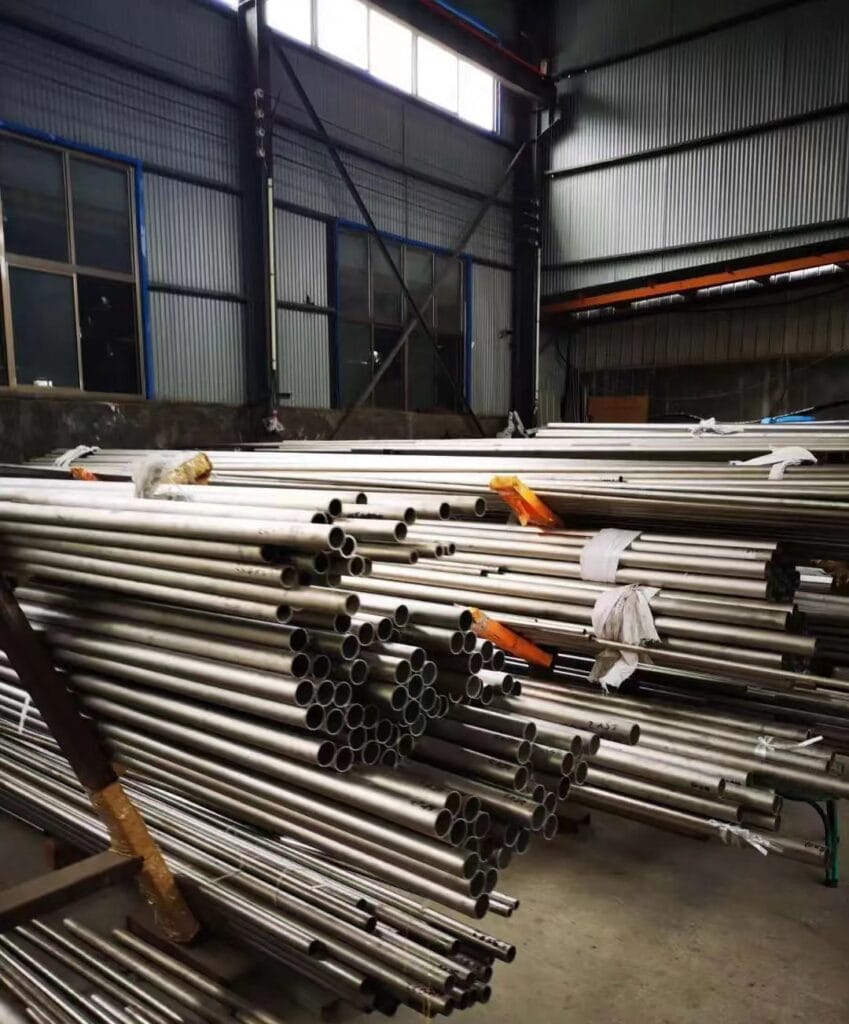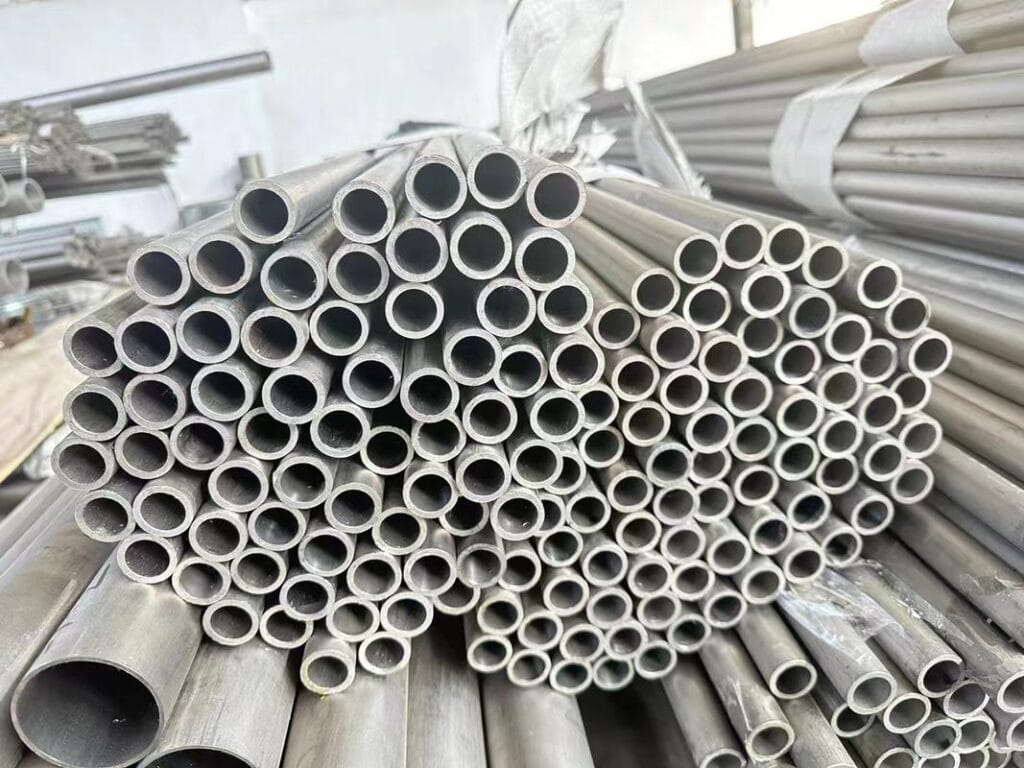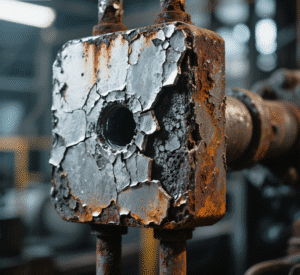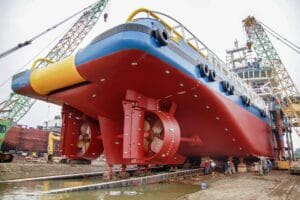Introduction: The Art of Creating High-Performance Titanium Tubes
TC4 titanium, also known as Ti-6Al-4V, is a widely used alloy prized for its exceptional strength, corrosion resistance, and lightweight properties. Producing high-quality TC4 titanium tubes requires precision manufacturing processes that preserve these properties while meeting stringent industrial requirements. But what are the key processes involved in their production?
The manufacturing of TC4 titanium tubes involves forging, extrusion, heat treatment, and precision finishing, ensuring they meet the demanding specifications of industries like aerospace, medical, and energy.
Let me walk you through the essential processes that bring TC4 titanium tubes to life.

How Does Forging Lay the Foundation for TC4 Titanium Tubes?
The production process begins with forging, where titanium billets are shaped into a preform that will later become tubes.
Key steps:
• Grain Refinement: Forging improves the material’s microstructure, enhancing its mechanical properties.
• Shape Formation: The billet is formed into a hollow cylindrical preform, setting the stage for subsequent processes.
• Defect Reduction: Forging eliminates voids and ensures uniform density, critical for high-performance applications.
Forging is the first crucial step that establishes the strength and integrity of TC4 titanium tubes.
What Role Does Extrusion Play in Shaping the Tubes?
Extrusion transforms the forged preform into a long, hollow tube by forcing it through a die under high pressure.
Key advantages:
• Precision Shaping: The process ensures uniform thickness and diameter along the tube’s length.
• Improved Grain Alignment: Extrusion aligns the material’s grain structure, increasing its strength and fatigue resistance.
• Versatility: This process accommodates a wide range of tube sizes and wall thicknesses.
Extrusion is vital for producing the seamless geometry required for TC4 titanium tubes.

How Does Heat Treatment Optimize Mechanical Properties?
Heat treatment is used to refine the microstructure of TC4 titanium tubes and tailor their mechanical characteristics.
Key processes:
• Solution Treatment and Aging (STA): Balances strength and ductility by altering the alpha and beta phase composition.
• Stress Relieving: Reduces residual stresses from previous processes, improving dimensional stability.
• Annealing: Enhances toughness and prepares the tubes for final machining and finishing.
Heat treatment ensures that TC4 titanium tubes achieve the precise balance of properties required for their intended applications.
How Are TC4 Titanium Tubes Finished to Meet Precision Standards?
After heat treatment, precision finishing processes ensure the tubes meet exact specifications.
Key steps:
• Cold Rolling: Further refines the tube’s dimensions and surface finish, enhancing strength and appearance.
• Machining: Customizes dimensions and adds specific features like threads or grooves.
• Polishing: Creates a smooth surface, reducing friction and improving corrosion resistance.
Precision finishing is the final touch that transforms TC4 titanium tubes into ready-to-use components for critical applications.
How Does Non-Destructive Testing Ensure Quality?
Quality control is an integral part of the manufacturing process to verify the integrity of TC4 titanium tubes.
Key methods:
• Ultrasonic Testing (UT): Detects internal flaws, ensuring structural integrity.
• Radiographic Testing (RT): Identifies any defects in welds or seams.
• Dimensional Inspections: Confirms the tubes meet strict tolerances and design requirements.
Rigorous testing ensures that each TC4 titanium tube delivers the performance and reliability demanded by its application.
Why Is Cold Drawing Sometimes Used in Tube Manufacturing?
Cold drawing is an optional step used to refine tube dimensions and achieve tighter tolerances for specialized applications.
Key benefits:
• Enhanced Strength: The process induces work hardening, increasing the tube’s mechanical strength.
• Precision Dimensions: Achieves exact inner and outer diameters, critical for aerospace and medical uses.
• Smooth Surfaces: Reduces surface roughness, improving both functionality and aesthetics.
Cold drawing adds an extra layer of precision, making TC4 titanium tubes suitable for the most demanding environments.
Claim: Why Manufacturing Processes Are Key to TC4 Titanium Tubes
The production of TC4 titanium tubes involves a combination of forging, extrusion, heat treatment, and finishing processes. These steps ensure the tubes meet the highest standards of strength, durability, and precision.
Conclusion: Precision Engineering for High-Performance Tubes
When I think about the manufacturing of TC4 titanium tubes, it’s clear that every step plays a crucial role in achieving excellence. From forging to finishing, these processes ensure the tubes deliver unparalleled performance in industries that demand the best. For me, the art and science behind TC4 titanium tube production exemplify the precision required to meet the challenges of modern engineering.






